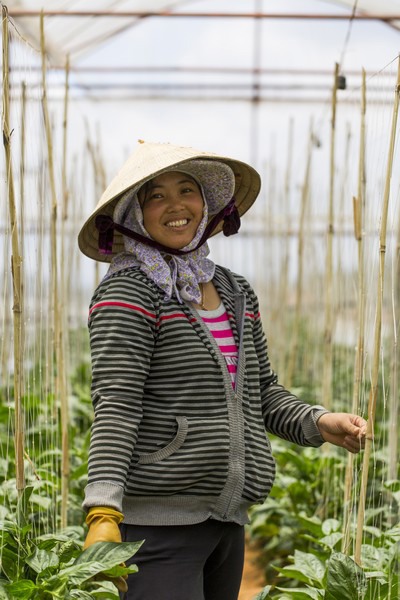The greenhouse design is being finalized and next year Rijk Zwaan hopes to open a new R&D Station in Da Lat, Vietnam's main horticultural region. "At this location we will select varieties for the protected market in Vietnam and the Southeast Asia region," says Friso Klok of Rijk Zwaan Vietnam. He has lived in Ho Chi Minh City for several years and focuses on the region. "A lot is happening here."


Growth market Vietnam
Vietnam has been in the spotlight for years when it comes to countries with great potential for horticulture: an area of more than 5,000 hectares of horticulture, a young and ambitious population, a large domestic market, and a favorable climate for foreign investment. Vegetable breeding company Rijk Zwaan has been here since 2018. "Vietnam is doing well in the horticultural field," Friso explains. "The economy is developing rapidly and the domestic market is large.”
Vietnam has named horticulture as a growing sector, which means foreign investment is welcome and regulations are favorable. "In recent years, they have become a major exporter of tropical fruits like pomelos and pitaya, as well as coffee, nuts, pepper and tea. In vegetables, we don't see that as much yet, but we expect that to come as well along with the development of the sector."
Combined with a young population and a country that has traditionally had a strong agricultural sector, all the signs for further growth are there. "These growth factors are not unique to Vietnam, but it is the complete set of factors that we miss in other countries," Friso says.
He outlines how Vietnam's horticulture sector largely consists of family farms. "The grower is also the owner, and the family works on the farm, so there is less shortage of labor. They start with a few thousand meters and when things go well and they can make a good income from it, they expand a bit." Thanks to this, the company and the grower themselves develop hand in hand.
"A lot of knowledge is being gained, which is an important success factor: they see which changes work, implement further improvements and expand." For Rijk Zwaan, it is important to support growers and help them with their cultivation questions. "Our team consists of 15 people and is constantly visiting growers to provide training and share knowledge. Our services are not just about our varieties, but also about irrigation, fertilization, everything to do with cultivation."
 Friso Klok with his colleague Jan Doldersum on the Horti Asia 2018
Friso Klok with his colleague Jan Doldersum on the Horti Asia 2018
Wide range
From Rijk Zwaan's total range, the snack / baby cucumber is a particularly successful product. "About 10 years ago, this was a novelty, now it has become a commodity," says Friso. " Blocky pepper is also one of our best-selling crops. We offer tomatoes and we deliver several varieties of pickles in Vietnam. Hydroponically grown lettuce is not very big yet, but we see more and more companies starting to grow lettuce on NFT."
Behind these developments are the growing economy and the younger population, which has more to spend. "Wages are going up and the market is changing. Now 80% of shopping is still done in the traditional market. Retail is coming up fast, but it is still a small part compared to other countries."
The Vietnamese market also has a number of unique characteristics. For example, consumption is changing, but Asian vegetables remain very important, both leafy greens and other products. "Big chains like McDonald's or Burger King are not successful here. They compete with tasty, healthy street food that is ready to eat within a minute. Salad stores are popping up here and there for the mid- and high-end segment. But that's not happening on a large scale yet; that will take some more time."
"Consistency and quality of supply are becoming more important" Friso continues. "Additionally, the quality from the Vietnamese greenhouses is already impressive and the companies are constantly developing." To get Vietnam on the map as an export country for horticultural products, the cold chain still requires improvement. "That will automatically happen when the quality of the cultivation improves and the demand from other countries increases."

 Knowledge, varieties and technology
Knowledge, varieties and technology
Thanks to the entrepreneurial culture and pragmatic approach growers improve quickly However the horticultural region of Da Lat is becoming extremely crowded and greenhouses will have to move to other locations with more harsh climates. Like the Netherlands, Vietnam has various climates, and cultivation in the south is a major challenge. Therefore, more technical input and innovation will be needed such as climate computers, different greenhouses and maybe different systems for water recirculation."
With their new R&D Station, Rijk Zwaan aims to support the growers in this development. The 3.5-hectare center is being realized in Da Lat in Lam Dong. Besides variety selection for the region, the station will provide demonstrations showing innovative varieties and new techniques.
"We see opportunities in more crops and want to investigate that at a good, local location. It will be an interesting time."

 Rijk Zwaan
Rijk Zwaan